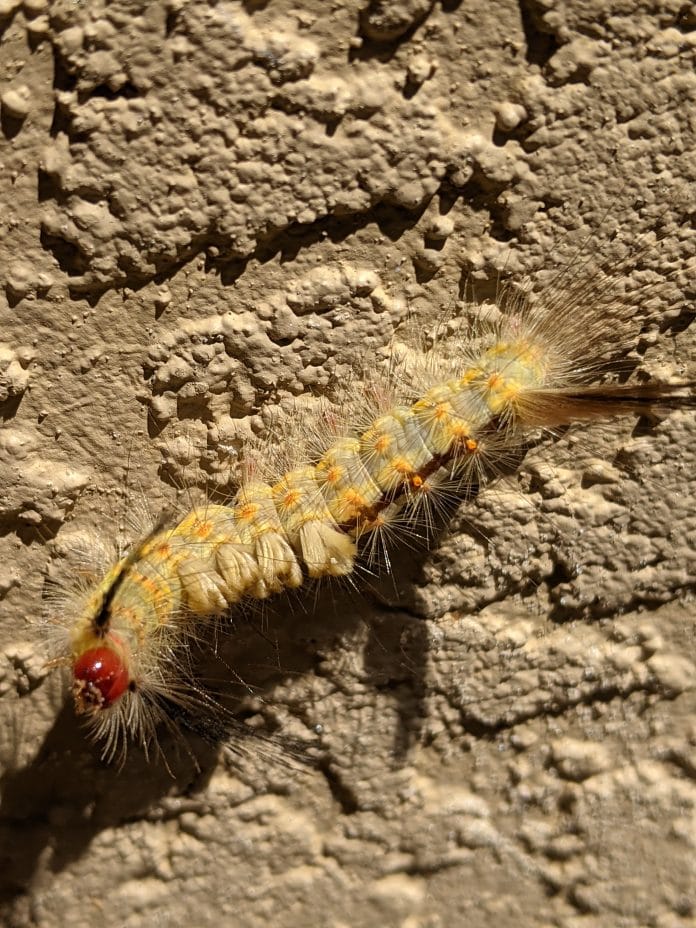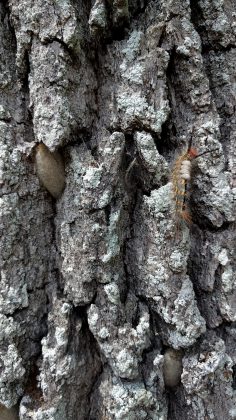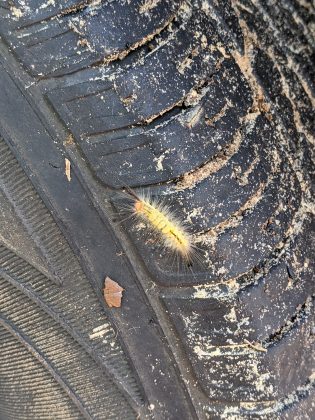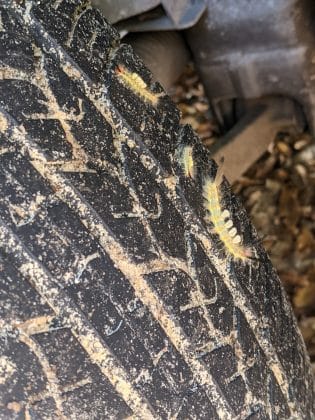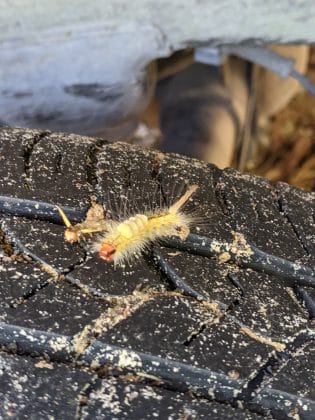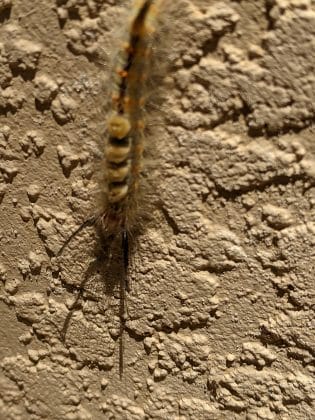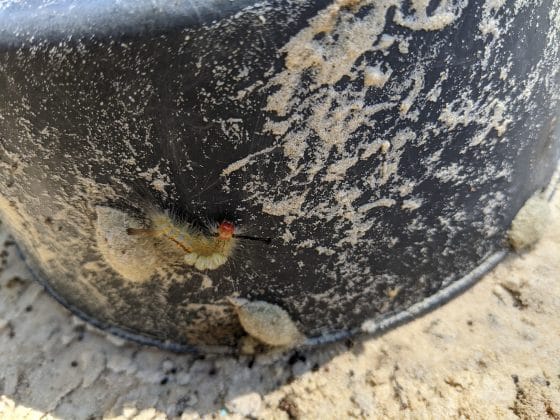If you’ve taken a walk outdoors recently, you may have noticed a small army invading many of the plants in your landscape. They carry what appears to be three white marshmallows on their backs.
These are tussock moth caterpillars and you may want to think twice about hanging your wash out to dry when they are about- especially if your line runs between oak trees. The beautiful larva of the tussock moth pack a bit of a sting, as they are equipped with a venom gland and associated ‘barbs’ found mostly along the white ‘marshmallow’ dorsal tufts. Their cocoons also contain the same venomous barbs spun into its hairs and can be potent up to a year.
When you are unlucky enough to have one of these caterpillars fall from a tree or crawl up your pant leg, you’ll most likely become aware of it within moments. You’ll feel a sting and welts will develop where your skin has come into contact with the caterpillar’s barb. The itch and welt could last up to a day, but it varies between individuals.
Orgyia leucostigma, is the most common of the tussock moths in Florida. (There are two other species of Orgyia moths in Florida, which look similar to O. leucostigma with the marshmallow looking tufts along the dorsal side.)
O. leucostigma produces two generations per year. This time of year the (first generation) larva are very active. We are witnessing the mature larva/caterpillars (that hatched in late February) seach out crevices to pupate. The larva have been feeding on a variety of host plants, mainly oak, cherry, hackberry, and willow.
They remain in the cocoon until late April, when adults emerge. The adults are dull compared to the colorful caterpillars and adult females are flightless. Females remain on the cocoon and begin to produce a pheromone to attract males in order to mate. Females then lay eggs directly on the cocoon and eggs hatch within a few weeks.
While larvae can be quite voracious and have been known to defoliate trees when present in large numbers, tussock moths are vulnerable to parasitism, bird predation, fungus and pathogens.
If you want to take a proactive approach to limit the tussock moths around your home, The University of Florida advises the following.
Walk around the house with a broom and sweep the climbing caterpillars into a pail of soapy water before they have a chance to spin their cocoons.
Remove cocoons by slipping tweezers or a similar instrument between the cocoon and the wall. Wear a long-sleeved shirt while doing this, as the caterpillar hairs in the cocoon may irritate the skin on the forearm.
If you are brave, The University of Florida suggests a project to observe part of the moth’s life-cycle. You can “collect fresh cocoons in ventilated glass jars or yogurt cups. Within 10 days there should be adult moths and several natural enemies. Parasitism often runs near 50%.”
If you collect more than one cocoon you will be able to observe the difference between the males and females.

